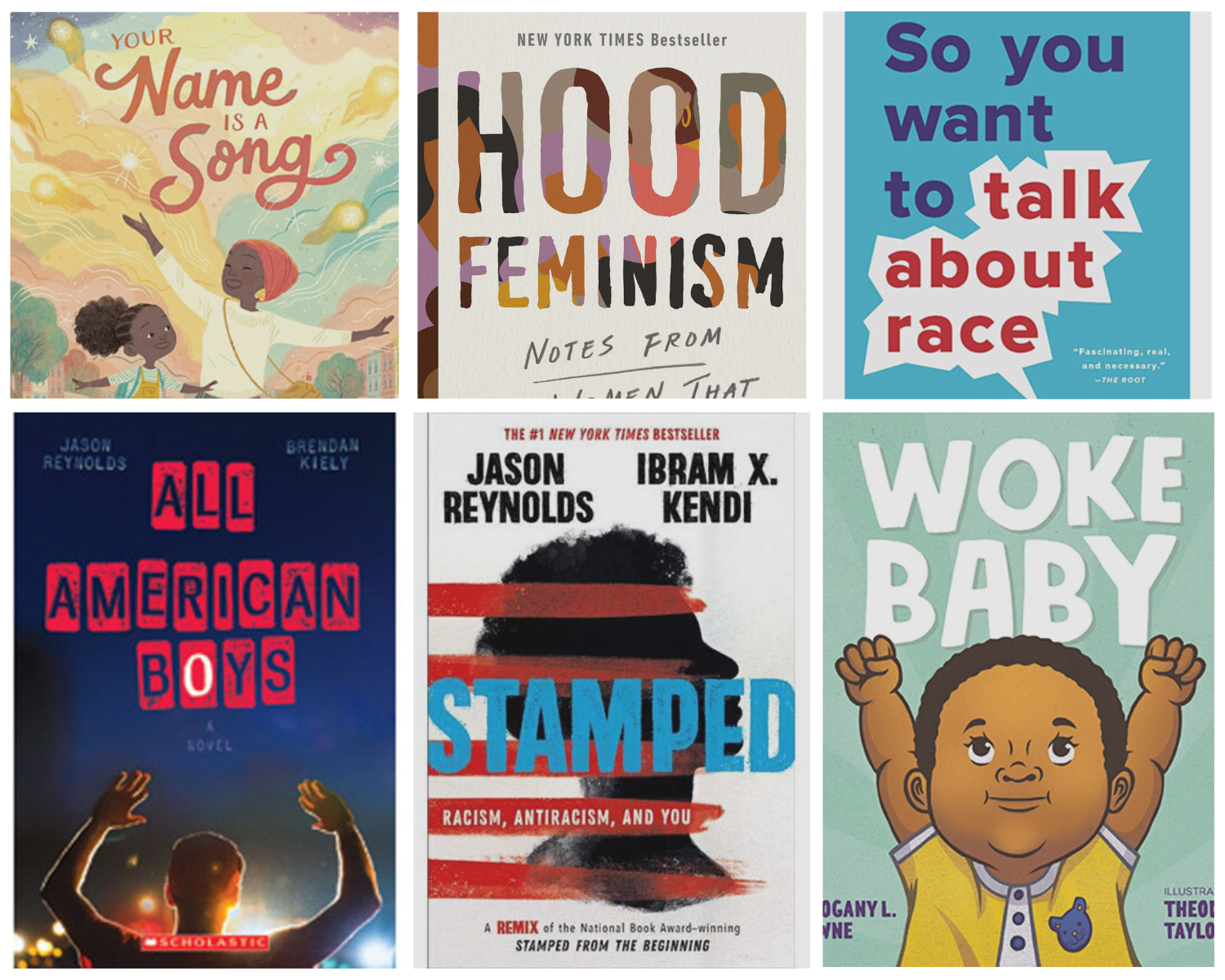This list of Read in Color recommended reads explores themes of antiracism and inclusion. These titles are recommended by Little Free Library’s Diverse Books Advisory Group and others. The list of books includes options for early readers, middle and YA readers, and adults and advanced readers.
View all of the Read in Color Recommended Reading lists. These lists are far from exhaustive, but they offer a starting point for exploring different perspectives. We recognize that categorizing books can be limiting and are working to show the intersectionality within our reading lists.
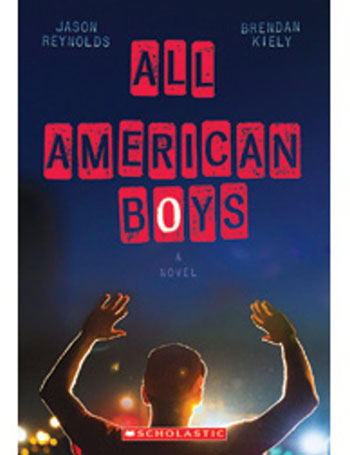
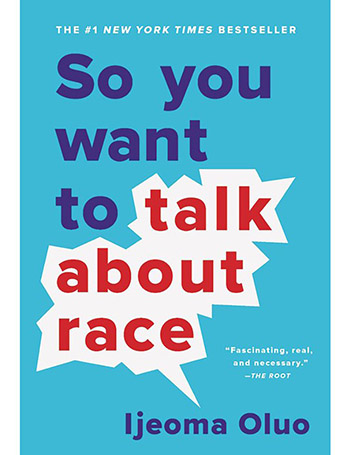
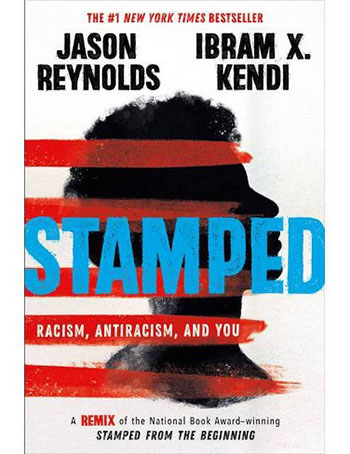
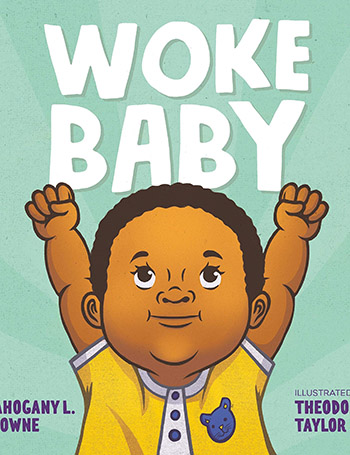
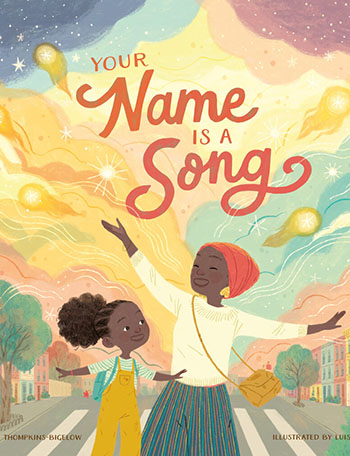
Antiracism + Inclusion (Early Readers)
Click ▶ to reveal more information.
All Are Welcome
All Are Welcome by Alexandra Penfold, illustrated by Suzanne Kaufman (44 pp, Knopf Books for Young Readers, 2018). Follow a group of children through a day in their school, where everyone is welcomed with open arms. A school where students from all backgrounds learn from and celebrate each other’s traditions. A school that shows the world as we will make it to be. Ages 4 – 8.
An American Story
An American Story by Kwame Alexander, illustrated by Dare Coulter (56 pp, Little, Brown Books for Young Readers, 2023).
From the fireside tales in an African village, through the unspeakable passage across the Atlantic, to the backbreaking work in the fields of the South, this is a story of a people’s struggle and strength, horror and hope. This is the story of American slavery, a story that needs to be told and understood by all of us. A testament to the resilience of the African American community, this book honors what has been and envisions what is to be.With stunning mixed-media illustrations by newcomer Dare Coulter, this is a potent book for those who want to speak the truth. Perfect for family sharing, the classroom, and homeschooling. Ages 4 – 8.
Antiracist Baby
Antiracist Baby by Ibram X. Kendi, illustrated by Ashley Lukashevsky (32 pp, Kokila, 2020). With bold art and thoughtful yet playful text, Antiracist Baby introduces the youngest readers and the grown-ups in their lives to the concept and power of antiracism. Providing the language necessary to begin critical conversations at the earliest age, Antiracist Baby is the perfect gift for readers of all ages dedicated to forming a just society. Ages 2 – 3.
Change Sings
Change Sings: A Children’s Anthem by Amanda Gorman, illustrated by Loren Long (32 pp, Viking Books for Young Readers, 2021). In this stirring, much-anticipated picture book by presidential inaugural poet and activist Amanda Gorman, anything is possible when our voices join together. As a young girl leads a cast of characters on a musical journey, they learn that they have the power to make changes–big or small–in the world, in their communities, and in most importantly, in themselves. Ages 4 – 8.
Goodnight Racism
Goodnight Racism by Ibram X. Kendi, illustrated by Cbabi Bayoc (32 pp, Kokila, 2022).
As children all over the world get ready for bed, the moon watches over them. The moon knows that when we sleep, we dream. And when we dream, we imagine what is possible and what the world can be. With dynamic, imaginative art and poetic prose, Goodnight Racism delivers important messages about antiracism, justice, and equality in an easy-to-read format that empowers readers both big and small. Goodnight Racism gives children the language to dream of a better world and is the perfect book to add to their social justice toolkit.
Ages 3 – 7.
I Am Human
I Am Human: A Book of Empathy by Susan Verde, illustrated by Peter H. Reynolds (32 pp, Harry N. Abrams, 2018). I Am Human affirms that we can make good choices by acting with compassion and having empathy for others and ourselves. When we find common ground, we can feel connected to the great world around us and mindfully strive to be our best selves. Ages 4 – 8.
I’m an American
I’m an American by Darshana Khiani, illustrated by Laura Freeman (48 pp, Viking Books for Young Readers, 2023).
What does it mean to be American? A classroom of children across many races, cultures, and origins explores the concept of Americanness as they each share bits of their family history and how their past has shaped their own personal American experience. Whether as new immigrants, or those whose family came to this country generations ago, or other scenarios, these children’s stories show some of the broad range of cultures and values that form the history and identity of our nation. Ages 4 – 8.
Everybody in the Red Brick Building
Everybody in the Red Brick Building by Anne Wynter, illustrated by Oge Mora (32 pp, Balzer & Bray/Harperteen, 2021). A fresh, urban take on bedtime stories in the spirit of The House That Jack Built and Chicka Chicka Boom Boom. A chain reaction of noises wakes up several children (and a cat) living in an apartment building. But it’s late in the night, so despite the disturbances, one by one, the building’s inhabitants return to their beds–this time with a new set of sounds to lull them to sleep. Ages 3 – 6.
I Promise
I Promise by LeBron James, illustrated by Nina Mata (40 pp, Harper Collins, 2020). Just a kid from Akron, Ohio, who is dedicated to uplifting youth everywhere, LeBron James knows the key to a better future is to excel in school, do your best, and keep your family close. I Promise is a lively and inspiring picture book that reminds us that tomorrow’s success starts with the promises we make to ourselves and our community today. Ages 4 – 8.
IntersectionAllies: We Make Room for All
IntersectionAllies: We Make Room for All by Chelsea Johnson, LaToya Council, and Carolyn Choi; illustrations by Ashley Seil Smith (56 pp, Dottir Press, 2019). The brainchild of three women-of-color sociologists, IntersectionAllies is a smooth, gleeful entry into intersectional feminism. The nine interconnected characters proudly describe themselves and their backgrounds, involving topics that range from a physical disability to language brokering, offering an opportunity to take pride in a personal story and connect to collective struggle for justice. Ages 6 – 12.
Just Ask! Be Different, Be Brave, Be You
Just Ask! Be Different, Be Brave, Be You by Sonia Sotomayor, illustrated by Rafael López (32 pp, Philomel Books, 2019). Feeling different, especially as a kid, can be tough. But in the same way that different types of plants and flowers make a garden more beautiful and enjoyable, different types of people make our world more vibrant and wonderful. In Just Ask, United States Supreme Court Justice Sonia Sotomayor celebrates the different abilities kids (and people of all ages) have. Ages 4 – 8.
A Kids Book About Diversity
A Kids Book About Diversity by Charnaie Gordon (72 pp, A Kids Company About Inc., 2021). Diversity is what makes the world such a beautiful and interesting place. When you open your life to it, you learn to respect and celebrate those differences that make everyone special—including your own. This book was made to help kids understand what diversity is and how to actively embrace diversity in every aspect of their lives. Ages 5 and up.
A Kid’s Book About Racism
A Kid’s Book About Racism by Jelani Memory (A Kid’s Book About, 2019). Yes, this really is a kids book about racism. Inside, you’ll find a clear description of what racism is, how it makes people feel when they experience it, and how to spot it when it happens. This is one conversation that’s never too early to start, and this book was written to be an introduction for kids on the topic. Ages 5 – 9.
Love
Love by Matt de la Peña, illustrated by Loren Long (40 pp, G.P. Putnam’s Sons Books for Young Readers, 2018). In this heartfelt celebration of love, Newbery Medal-winning author Matt de la Peña and bestselling illustrator Loren Long depict the many ways we experience this universal bond, which carries us from the day we are born throughout the years of our childhood and beyond. With a lyrical text that’s soothing and inspiring, this tender tale is a needed comfort and a new classic that will resonate with readers of every age. Ages 4 – 8.
Milo Imagines the World
Milo Imagines the World by Matt de la Peña, illustrated by Christian Robinson (40 pp, G.P. Putnam’s Sons Books for Young Readers, 2021). Milo is on a long subway ride with his older sister. To pass the time, he studies the faces around him and makes pictures of their lives. There’s the whiskered man with the crossword puzzle; Milo imagines him playing solitaire in a cluttered apartment full of pets. There’s the wedding-dressed woman with a little dog peeking out of her handbag; Milo imagines her in a grand cathedral ceremony. And then there’s the boy in the suit with the bright white sneakers; Milo imagines him arriving home to a castle with a drawbridge and a butler. But when the boy in the suit gets off on the same stop as Milo–walking the same path, going to the exact same place–Milo realizes that you can’t really know anyone just by looking at them. Ages 4 – 8.
Our Favorite Day of the Year
Our Favorite Day of the Year by A.E. Ali, illustrated by Rahele Jomepour Bell (40 pp, Salaam Reads / Simon & Schuster Books for Young Readers, 2020). Musa’s feeling nervous about his first day of school. He’s not used to being away from home and he doesn’t know any of the other kids in his class. And when he meets classmates Moisés, Mo, and Kevin, Musa isn’t sure they’ll have much in common. But over the course of the year, the four boys learn more about each other, the holidays they celebrate, their favorite foods, and what they like about school. The more they share with each other, the closer they become, until Musa can’t imagine any better friends. Ages 4 – 8.
Our Skin: A First Conversation about Race
Our Skin: A First Conversation about Race by Megan Madison and Jessica Ralli, illustrated by Isabel Roxas (38 pp, Rise X Penguin Workshop, 2021). Developed by experts in the fields of early childhood and activism against injustice, this topic-driven board book offers clear, concrete language and beautiful imagery that young children can grasp and adults can leverage for further discussion. This first book in the series begins the conversation on race, with a supportive approach that considers both the child and the adult. Stunning art accompanies the simple and interactive text, and the backmatter offers additional resources and ideas for extending this discussion. Ages 2 – 5.
A Place Inside of Me
A Place Inside of Me: A Poem to Heal the Heart by Zetta Elliott, illustrated by Noa Denmon (176 pp, Little, Brown Books for Young Readers, 2021). In this powerful, affirming poem by award-winning author Zetta Elliott, a Black child explores his shifting emotions throughout the year. Summertime is filled with joy―skateboarding and playing basketball―until his community is deeply wounded by a police shooting. As fall turns to winter and then spring, fear grows into anger, then pride and peace. Ages 4 – 8.
Stacey’s Remarkable Books
Stacey’s Remarkable Books by Stacey Abrams, illustrated by Kitt Thomas (32 pp, Balzer & Bray/Harperteen, 2022). Stacey’s favorite day of the week is Thursday, when the whole class goes to the library and she gets to lose herself in her beloved books. On one of these special days, Stacey discovers that a new student named Julie has trouble reading in English, so they begin sharing books and stories to practice. Soon, more students start to join them. Books take the group on magical adventures and reveal other worlds and cultures–but best of all, they bring them together as friends. Ages 4 – 8.
Stamped (For Kids): Racism, Anitracism, and You
Stamped (For Kids): Racism, Anitracism, and You by Jason Reynolds and Ibram X. Kendi, adapted by Sonja Cherry-Paul, illustrated by Rochelle Baker (176 pp, Little, Brown Books for Young Readers, 2021). Adapted from the groundbreaking bestseller Stamped: Racism, Antiracism, and You, this book takes readers on a journey from present to past and back again. Kids will discover where racist ideas came from, identify how they impact America today, and meet those who have fought racism with antiracism. Along the way, they’ll learn how to identify and stamp out racist thoughts in their own lives. Ages 6 – 10.
That Flag
That Flag by Tameka Fryer Brown, illustrated by Nikkolas Smith (40 pp, HarperCollins Publishers, 2023).
Bianca is Keira’s best friend. At school, they are inseparable. But Keira questions their friendship when she learns more about the meaning of the Confederate flag hanging from Bianca’s front porch. Will the two friends be able to overlook their distinct understandings of the flag? Or will they reckon with the flag’s effect on yesterday and today? Ages 6 – 10.
Woke Baby
Woke Baby by Mahogany L. Brown, illustrated byTheodore Taylor III (22 pp, Roaring Brook Press, 2018). Woke babies are up early. Woke babies raise their fists in the air. Woke babies cry out for justice. Woke babies grow up to change the world. This lyrical and empowering book is both a celebration of what it means to be a baby and what it means to be woke. Baby – 3.
Your Name Is a Song
Your Name Is a Song by Jamilah Thompkins-Bigelow, illustrated by Luisa Uribe (40 pp, The Innovation Press, 2020). Frustrated by a day full of teachers and classmates mispronouncing her beautiful name, a little girl tells her mother she never wants to come back to school. In response, the girl’s mother teaches her about the musicality of African, Asian, Black-American, Latinx, and Middle Eastern names on their lyrical walk home through the city. Ages 5 – 10.
Antiracism + Inclusion (Middle Readers)
Click ▶ to reveal more information.
Allies: Real Talk about Showing Up, Screwing Up, and Trying Again
Allies: Real Talk about Showing Up, Screwing Up, and Trying Again by Shakirah Bourne and Dana Alison Levy (240 pp, DK Publishing (Dorling Kindersley), 2021). As an ally, you use your power–no matter how big or small–to support others. You learn, and try, and mess up, and try harder. In this collection of true stories, 17 critically acclaimed and bestselling YA authors get real about being an ally, needing an ally, and showing up for friends and strangers. From raw stories of racism and invisible disability to powerful moments of passing the mic, these authors share their truths. They invite you to think about your own experiences and choices and how to be a better ally. Ages 13 and up.
Art of Protest: Creating, Discovering, and Activating Art for Your Revolution
Art of Protest: Creating, Discovering, and Activating Art for Your Revolution by de Nichols, illustrated by Diana Dagadita, Molly Mendoza, Olivia Twist, Saddo, and Diego Becas (240 pp, DK Publishing, 2021). From the psychedelic typography used in “Make Love Not War” posters of the ’60s to the solitary raised fist, some of the most memorable and striking protest artwork from across the world and throughout history deserves a long, hard look. Readers can explore each piece of art to understand how color, symbolism, technique, and typography play an important role in communication. Guided by activist, lecturer, and speaker De Nichols’s powerful narrative and stunningly illustrated by a collaboration of young artists, this volume also has plenty of tips and ideas for creating your own revolutionary designs. This is a fully comprehensive look at the art of protest. Ages 13 and up.
Blue Stars: Mission One
Blue Stars: Mission One by Kekla Magoon and Cynthia Leitich Smith, illustrated by Molly Murakami (176 pp, Candlewick Press, 2024). When cousins Riley Halfmoon and Maya Dawn move to Urbanopolis to live with their activist grandma, they get off to a rocky start. Outgoing Riley misses her Muscogee cousins but is sure that she and Maya will be instant BFFs. Meanwhile, introvert Maya misses her parents, on active duty in Japan, and just wants some space to herself. At school, Maya joins Robotics Club and Riley bonds with fellow gymnasts. Just when they start to feel at home, their school culture is threatened by an influential foe in disguise. Joining student council feels like a way to help, so both cousins toss their hats in the ring for sixth-grade class president. But when they realize what they’re up against–money, power, and lies–they quickly shift from competition to cooperation, joining forces as superheroes. Riley is savvy with people; Maya is a whiz with gadgets. In no time, this dazzling duo is off to save the day! Relatable and rich in themes of family, community, and compromise, the Blue Stars series will entertain and empower, inspiring readers to be the stars they are. Ages 8 – 12.
Everything I Learned about Racism I Learned in School
Everything I Learned about Racism I Learned in School by Tiffany Jewell (272 pp, Versify, 2024).
From preschool to higher education and everything in between, Everything I Learned About Racism I Learned in School focuses on the experiences Black and Brown students face as a direct result of the racism built into schools across the United States. The overarching nonfiction narrative follows author Tiffany Jewell from early elementary school through her time at college, unpacking the history of systemic racism in the American educational system along the way. Throughout the book, other writers of the global majority share a wide variety of personal narratives and stories based on their own school experiences. Ages 13 and up.
Everything Sad Is Untrue
Everything Sad Is Untrue (a true story) by Daniel Nayeri (368 pp, Levine querido, 2020). A sprawling, evocative, and groundbreaking autobiographical novel told in the unforgettable and hilarious voice of a young Iranian refugee. In an Oklahoman middle school, Khosrou (whom everyone calls Daniel) stands in front of a skeptical audience of classmates, telling the tales of his family’s history, stretching back years, decades, and centuries. At the core is Daniel’s story of how they became refugees. Ages 12 and up.
Fresh Ink
Fresh Ink by Lamar Giles (224 pp, Crown Books for Young Readers, 2019). Thirteen of the most accomplished YA authors deliver a label-defying anthology that includes ten short stories, a graphic novel, and a one-act play from Walter Dean Myers never before in-print. This collection addresses topics like gentrification, acceptance, untimely death, coming out, and poverty and ranges in genre from contemporary realistic fiction to adventure and romance. Ages 12 – 17.
Harbor Me
Harbor Me by Jacqueline Woodson (192 pp, Puffin Books, 2020). It all starts when six kids have to meet for a weekly chat–by themselves, with no adults to listen in. There, in the room they soon dub the ARTT Room (short for “A Room to Talk”), they discover it’s safe to talk about what’s bothering them. When the six are together, they can express the feelings and fears they have to hide from the rest of the world. And together, they can grow braver and more ready for the rest of their lives. Ages 10 – 13.
I Was Their American Dream
I Was Their American Dream by Malaka Gharib (160 pp, Clarkson Potter, 2019). Malaka Gharib’s triumphant graphic memoir brings to life her teenage antics and illuminates earnest questions about identity and culture, while providing thoughtful insight into the lives of modern immigrants and the generation of millennial children they raised. Malaka’s story is a heartfelt tribute to the American immigrants who have invested their future in the promise of the American dream. Ages 12 and up.
Mascot
Mascot by Traci Sorell and Charles Waters (256 pp, Charlesbridge Publishing, 2023). What if a school’s mascot is seen as racist, but not by everyone? In this compelling middle-grade novel in verse, two best-selling BIPOC authors tackle this hot-button issue. In Rye, Virginia, just outside Washington, DC, people work hard, kids go to school, and football is big on Friday nights. An eighth-grade English teacher creates an assignment for her class to debate whether Rye’s mascot should stay or change. Now six middle schoolers–all with different backgrounds and beliefs–get involved in the contentious issue that already has the suburb turned upside down with everyone choosing sides and arguments getting ugly. Ages 10 – 13.
Not Your All-American Girl
Not Your All-American Girl by Wendy Wan-Long and Madelyn Rosenberg (256 pp, Scholastic Press, 2020). Lauren and her best friend, Tara, have always done absolutely everything together, including the sixth grade school play. But when the show is cast, Lauren lands in the ensemble, while Tara scores the lead role. Their teacher explains: Lauren just doesn’t look the part of the all-American girl. What audience would believe that she, half-Jewish, half-Chinese Lauren, was the everygirl star from Pleasant Valley, USA? Ages 8 – 12.
Stamped: Racism, Antiracism, and You
Stamped: Racism, Antiracism, and You by Jason Reynolds and Ibram X. Kendi (320 pp, Little, Brown Books for Young Readers, 2020). The construct of race has always been used to gain and keep power, to create dynamics that separate and silence. This remarkable reimagining of Dr. Ibram X. Kendi’s National Book Award-winning Stamped from the Beginning reveals the history of racist ideas in America, and inspires hope for an antiracist future. Ages 12 and up.
The Sum of Us
The Sum of Us (Adapted for Young Readers) by Heather McGhee (240 pp, Delacorte Press, 2023). The New York Times bestseller, now adapted for a new generation of young readers, leaders, thinkers, and activists. A groundbreaking call to action that examines how racism affects and harms all of us and how we need to face it head-on, together. The future can be prosperous for everyone, but only if we address the problems of racial and economic inequality. Ages 10 – 14.
The Talk: Conversations about Race, Love & Truth
The Talk: Conversations about Race, Love & Truth by Wade Hudson and Cheryl Willis Hudson (160 pp, Crown Books for Young Readers, 2020). As long as racist ideas persist, families will continue to have the difficult and necessary conversations with their young ones on the subject. In this inspiring collection, literary all-stars such engage young people in frank conversations about race, identity, and self-esteem. Ages 10 – 16.
This Book Is Anti-Racist
This Book Is Anti-Racist by Tiffany Jewell (160 pp, Frances Lincoln Children’s Books, 2020). Who are you? What is racism? Where does it come from? Why does it exist? What can you do to disrupt it? Learn about social identities, the history of racism and resistance against it, and how you can use your anti-racist lens and voice to move the world toward equity and liberation. Ages 11 – 15.
We Rise, We Resist, We Raise Our Voices
We Rise, We Resist, We Raise Our Voices by Wade Hudson and Cheryl Willis Hudson (96 pp, Yearling, 2019). What do we tell our children when the world seems bleak, and prejudice and racism run rampant? With 96 lavishly designed pages of original art and prose, fifty diverse creators lend voice to young activists. Featuring poems, letters, personal essays, and art, this anthology empowers the nation’s youth to listen, learn, and build a better tomorrow. Ages 8 – 12.
We Were the Fire: Birmingham 1963
We Were the Fire: Birmingham 1993 by Sheila P. Moses (176 pp, Nancy Paulsen Books, 2022). Rufus Jackson Jones is from Birmingham, the place Dr. Martin Luther King Jr. called the most segregated place in the country. A place that in 1963 is full of civil rights activists including Dr. King. The adults are trying to get more attention to their cause–to show that separate is not equal. Rufus’s dad works at the local steel factory, and his mom is a cook at the mill. If they participate in marches, their bosses will fire them. So that’s where the kids decide they will come in. Nobody can fire them. So on a bright May morning in 1963, Rufus and his buddies join thousands of other students to peacefully protest in a local park. There they are met with policemen and firemen who turn their powerful hoses on them, and that’s where Rufus realizes that they are the fire. And they will not be put out. Shelia Moses gives readers a deeply personal account of one boy’s heroism during what came to be known as the Children’s Crusade in this important novel that highlights a key turning point in the civil rights movement. Ages 10 – 12.
What Lane?
What Lane? by Torrey Maldonado (144 pp, Yearling, 2019). Anything his friends can do, Stephen should be able to do too, right? So when they dare each other to sneak into an abandoned building, he doesn’t think it’s his lane, but he goes. Here’s the thing, though: Can he do everything his friends can? Lately, he’s not so sure. As a mixed kid, he feels like he’s living in two worlds with different rules—and he’s been noticing that strangers treat him differently than his white friends. Ages 10 and up.
Woke: A Young Poet’s Call to Justice
Woke: A Young Poet’s Guide to Justice by Mahogany L. Browne, Elizabeth Acevedo, et al. (224 pp, Roaring Brook Press, 2020). Woke: A Young Poet’s Guide to Justice is a collection of poems to inspire kids to stay woke and become a new generation of activists.Historically poets have been on the forefront of social movements. Woke is a collection of poems by women that reflects the joy and passion in the fight for social justice, tackling topics from discrimination to empathy, and acceptance to speaking out. Ages 12 – 17.
You Should See Me in a Crown
You Should See Me in a Crown by Leah Johnson (336 pp, Scholastic, 2020). Liz Lighty has always believed she’s too black, too poor, too awkward to shine in her small, rich, prom-obsessed midwestern town. But it’s okay—Liz has a plan that will get her out of Campbell, Indiana, forever: attend the uber-elite Pennington College, play in their world-famous orchestra, and become a doctor. But when the financial aid she was counting on unexpectedly falls through, Liz’s plans come crashing down … until she’s reminded of her school’s scholarship for prom king and queen. There’s nothing Liz wants to do less than endure a gauntlet of social media trolls, catty competitors, and humiliating public events, but despite her devastating fear of the spotlight she’s willing to do whatever it takes to get to Pennington. The only thing that makes it halfway bearable is the new girl in school, Mack. She’s smart, funny, and just as much of an outsider as Liz. But Mack is also in the running for queen. Will falling for the competition keep Liz from her dreams … or make them come true? Ages 12-18.
Antiracism + Inclusion (Adult Readers)
Click ▶ to reveal more information.
Caste
Caste by Isabel Wilkerson (496 pp, Random House, 2020). In this brilliant book, Isabel Wilkerson gives us a masterful portrait of an unseen phenomenon in America as she explores, through an immersive, deeply researched narrative and stories about real people, how America today and throughout its history has been shaped by a hidden caste system, a rigid hierarchy of human rankings. Beyond race, class, or other factors, this powerful caste system influences people’s lives and behavior and the nation’s fate.
The Color of Law: A Forgotten History of How Our Government Segregated America
The Color of Law: A Forgotten History of How Our Government Segregated America by Richard Rothstein (368 pp, Liveright, 2018). Exploding the myth of de facto segregation arising from private prejudice or the unintended consequences of economic forces, Rothstein describes how the American government systematically imposed residential segregation, with undisguised racial zoning, public housing that purposefully segregated previously mixed communities, and more.
A Good Time for Truth
A Good Time for Truth by Sun Yung Shin (240 pp, Minnesota Historical Society Press, 2019). In this provocative book, sixteen of Minnesota’s best writers provide a range of perspectives on what it is like to live as a person of color in Minnesota. They give readers a splendid gift: the gift of touching another human being’s inner reality, behind masks and veils and politeness. They bring us generously into experiences that we must understand if we are to come together in real relationships.
Hood Feminism
Hood Feminism: Notes from the Women That a Movement Forgot by Mikki Kendall (288 pp, Penguin Books, 2021). Today’s feminist movement has a glaring blind spot, and paradoxically, it is women. Mainstream feminists rarely talk about meeting basic needs as a feminist issue, argues Mikki Kendall, but food insecurity, access to quality education, safe neighborhoods, a living wage, and medical care are all feminist issues. All too often, however, the focus is not on basic survival for the many, but on increasing privilege for the few. That feminists refuse to prioritize these issues has only exacerbated the age-old problem of both internecine discord and women who rebuff at carrying the title. Moreover, prominent white feminists broadly suffer from their own myopia with regard to how things like race, class, sexual orientation, and ability intersect with gender. How can we stand in solidarity as a movement, Kendall asks, when there is the distinct likelihood that some women are oppressing others?
How to Be an Antiracist
How to Be an Antiracist by Ibram X. Kendi (624 pp, Random House, 2020). Antiracism is a transformative concept that reorients and reenergizes the conversation about racism—and, even more fundamentally, points us toward liberating new ways of thinking about ourselves and each other. In How to Be an Antiracist, Kendi takes readers through a widening circle of antiracist ideas—from the most basic concepts to visionary possibilities.
How to Raise an Antiracist
How to Raise an Antiracist by Ibram X. Kendi (288 pp, One World, 2022). Following the accessible genre of his internationally bestselling How to Be an Antiracist, Kendi combines a century of scientific research with a vulnerable and compelling personal narrative of his own journey as a parent and as a child in school. The chapters follow the stages of child development from pregnancy to toddler to schoolkid to teenager. It is never too early or late to start raising young people to be antiracist.
Just Us
Just Us by Claudia Rankine (352 pp, Graywolf Press, 2020). As everyday white supremacy becomes increasingly vocalized with no clear answers at hand, how best might we approach one another? Claudia Rankine, without telling us what to do, urges us to begin the discussions that might open pathways through this divisive and stuck moment in American history.
Me and White Supremacy
Me and White Supremacy by Layla Saad (256 pp, Sourcebooks, 2020). This eye-opening book challenges you to do the essential work of unpacking your biases, and helps white people take action and dismantle the privilege within themselves so that you can stop (often unconsciously) inflicting damage on people of color, and in turn, help other white people do better, too.
The New Jim Crow
The New Jim Crow by Michelle Alexander (352 pp, The New Press, 2020). Seldom does a book have the impact of Michelle Alexander’s The New Jim Crow. It has spawned a whole generation of criminal justice reform activists and organizations motivated by Michelle Alexander’s unforgettable argument that “we have not ended racial caste in America; we have merely redesigned it.”
So You Want to Talk about Race
So You Want to Talk about Race by Ijeoma Oluo (272 pp, Seal Press, 2019). In So You Want to Talk About Race, Ijeoma Oluo guides readers of all races through subjects ranging from intersectionality and affirmative action to “model minorities” in an attempt to make the seemingly impossible possible: honest conversations about race and racism, and how they infect almost every aspect of American life.
The Sum of Us
The Sum of Us: What Racism Costs Everyone and How We Can Prosper Together by Heather McGhee (448 pp, One World, 2021). Heather McGhee’s specialty is the American economy—and the mystery of why it so often fails the American public. From the financial crisis to rising student debt to collapsing public infrastructure, she found a common root problem: racism. But not just in the most obvious indignities for people of color. Racism has costs for white people, too. It is the common denominator of our most vexing public problems, the core dysfunction of our democracy and constitutive of the spiritual and moral crises that grip us all. But how did this happen? And is there a way out?
Viral Justice
Viral Justice: How We Grow the World We Want by Ruha Benjamin (392 pp, Princeton University Press, 2022). Long before the pandemic, Ruha Benjamin was doing groundbreaking research on race, technology, and justice, focusing on big, structural changes. But the twin plagues of COVID-19 and anti-Black police violence inspired her to rethink the importance of small, individual actions. Part memoir, part manifesto, Viral Justice is a sweeping and deeply personal exploration of how we can transform society through the choices we make every day.
We Are Not Like Them
We Are Not Like Them by Christine Pride and Jo Piazza (336 pp, Atria Books, 2021). Jen and Riley have been best friends since kindergarten. As adults, they remain as close as sisters, though their lives have taken different directions. Jen married young, and after years of trying, is finally pregnant. Riley pursued her childhood dream of becoming a television journalist and is poised to become one of the first Black female anchors of the top news channel in their hometown of Philadelphia. We Are Not Like Them explores complex questions of race and how they pervade and shape our most intimate spaces in a deeply divided world. But at its heart, it’s a story of enduring friendship–a love that defies the odds even as it faces its most difficult challenges.
White Women: Everything You Already Know about Your Own Racism and How to Do Better
White Women: Everything You Already Know about Your Own Racism and How to Do Better by Regina Jackson and Saira Rao (224 pp, Penguin Books, 2022). In this book, Jackson and Rao pose these urgent questions: how has being “nice” helped Black women, Indigenous women and other women of color? How has being “nice” helped you in your quest to end sexism? Has being “nice” earned you economic parity with white men? Beginning with freeing white women from this oppressive need to be nice, they deconstruct and analyze nine aspects of traditional white woman behavior–from tone-policing to weaponizing tears–that uphold white supremacy society, and hurt all of us who are trying to live a freer, more equitable life.
Why Are All the Black Kids Sitting Together in the Cafeteria?
Why Are All the Black Kids Sitting Together in the Cafeteria? by Beverly Daniel Tatum (464 pp, Basic Books, 2017). Walk into any racially mixed high school and you will see Black, White, and Latino youth clustered in their own groups. Is this self-segregation a problem to address or a coping strategy? Beverly Daniel Tatum, a renowned authority on the psychology of racism, argues that straight talk about our racial identities is essential if we are serious about enabling communication across racial and ethnic divides

